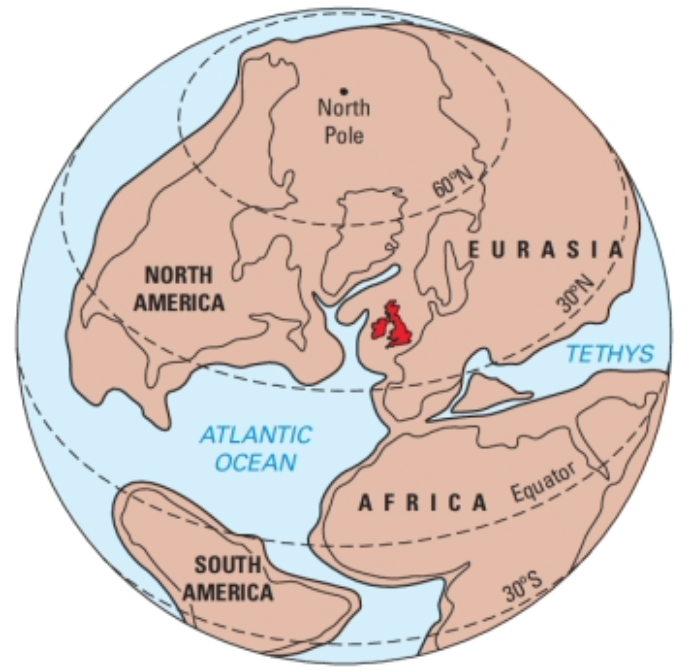Image: Katie Strang
My name is Dr Katie Strang and I’m a geologist and palaeontologist – meaning I study rocks and fossils! Recently, I was lucky to visit the Andrew Carnegie Birthplace Museum collections store and marvel over the wonderful collections.
Andrew Carnegie is infamous for his philanthropy and his connections to America, resulting in a truly unique and eclectic mix of objects that each deserve a post of their own. In this series of blogs I have picked out some of my favourite objects with a geological twist, and I hope you enjoy these items as much as I do!
First up we have this fossil of a plant, donated to the Museum by the Carnegie Museum of Natural History in Pittsburgh in 1972. This fossil is called Neuropteris sp., and is a type of extinct plant known as a ‘seed fern’. Like their name suggests, they reproduced using seeds, rather than spores like modern ferns do. This plant might not seem like much, but it tells us a much, much bigger story.
Image: Fossilised fern in the museum collection. ACBM 1972/35
This fossil was deposited around 310 million years ago, over 200 million years before Tyrannosaurus rex first appeared, during a time known as the Carboniferous Period – given it’s name due to the abundance of coal (carbon) bearing rocks of this age.
The ancient coal forests were very different to the modern swamplands found in the tropics of today. The most common plants were tree-like club-mosses (lycophytes); these could reach up to 50m in height! The trunks of these trees were made from soft cork-like tissue, rather than bark, and this feature helped these plants to reach their towering full size relatively quickly. Because these plants grew so quickly and then died, vast quantities of peat accumulated on the forest floor. This eventually formed the coal found in the coalfields of North America where this fossil originates from.
Now you are probably wondering what does any of this have to do with Fife? Firstly, it’s important to remember that Fife as we know now didn’t exist millions of years ago. It hasn’t always been in the same position on Earth as it is at present day; back then we lay at low latitudes, much closer to the equator. During this period the northern parts of Scotland were upland areas and the southern parts of Scotland were lower lying. Further to the north and west lay the North American continent, to which Scotland was joined!
The fossil record is one of many tools that enables paleaontologists to reconstruct such stories about Earth’s past, and this plant fossil from North America is not only found across the Atlantic; they can be found right here in Fife! This image below is of an extinct seed fern, Neuropteris sp., which was found in the Wemyss area.
This area is famous for its industrial history and coal workings, and some of these rocks contains beautiful plant fossils. Scientists know what types of environments these seed-ferns lived in, which means we know the conditions in North America were very similar to those here in Scotland at this time. The geological record is an archive, and rocks are like books that give us a glimpse into Earth’s ancient environments; unveiling a turbulent past of scorching deserts, erupting volcanoes, dense swamps, giant forests, tropical seas and the evolution of life here on Earth.
Scotland may be a relatively small country but this doesn’t stop it boasting an incredibly rich geological heritage, and its diverse range of geology and landforms tell a story of our evolving planet spanning over 3 billion years. If you’d like to learn more about our fascinating geological heritage be sure to become a member of the Scottish Geology Trust - we work to inspire people to care for and understand Scotland's geological heritage and its role in creating a sustainable future.
______________________________________
Dr Katie Strang is a geologist who graduated with an honours degree in Earth Sciences at the University of Glasgow in 2011 and a research masters in Evolutionary Biology (2012). Katie then undertook a PhD at Durham University, specialising in Black Shale Lagerstätten from the Cambrian Explosion, looking at the depositional environment and metamorphic history of these rocks.












